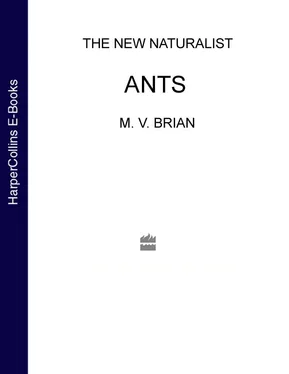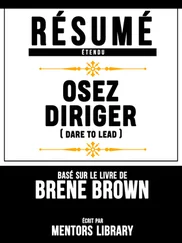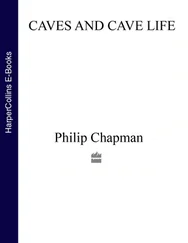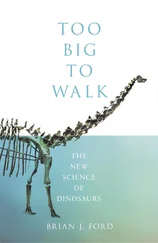Most ants have the usual insect compound eyes but they are never well-developed, even in males, and in those which spend most of their time underground or following scent trails above ground they may be quite absent. Each eye is formed of a group of small visual organs – ommatidia; in some insects like dragonflies there may be as many as thirty thousand of these but even in flying male ants one thousand is more like the maximum. In one of the wood ants, Formica cunicularia , there are 460 ommatidia in the worker caste; in the common black garden ant, Lasius niger , there are only 120 and in the related but soil-dwelling Lasius flavus a mere 45. Males and sexual females have three small, light-responsive organs on the top of their head (ocelli); their use is not fully understood but it seems likely that they play some part in activity, particularly flying.
The mouth, as in all insects, is surrounded and enclosed by several pairs of articulated appendages. The simplest and most prominent are the jaws (mandibles). These are hollow but have thick, tough walls and they hinge firmly on the front of the head in such a way that they can be either opened wide or closed tightly together ( fig. 3). Their sharply serrate margins enable a strong grip to be taken on small objects, such as the leg of a fly. Not all the teeth are of equal size; the front two are larger and can pierce insect cuticle. The back ones are shorter and more frequently used in gripping the brood when it is being carried about. All these teeth wear quite blunt as the worker ages and one or two of the bigger ones may chip away. Between the jaws there lies another pair of jointed structures that carry small palps which are almost certainly used in tasting and feeling food. These maxillae, as they are called, can fold back and cover the mouth completely without interfering with the free movement of the jaws; this is an obvious advantage in fighting. Finally, there is a tongue (the labium) that can be ejected by blood pressure ( fig. 2). It is quite manoeuvrable and is frequently used as a rasp since its tip is covered with fine striations. Liquid food flows up the tongue towards the mouth in saliva but before entering it must pass over a silt trap, known as the infra-buccal pocket, which takes out solid, largely indigestible granules from the food ( fig. 2). This pocket is also used as a depository for dust from the body in general; dust is collected by rubbing the middle and hind legs over the body surface; combs on the front legs ( fig. 6) are then used to remove it and these are then cleaned by passing them through the mouthparts. A lot of dust is collected by licking other ants and when the pocket is full its contents are thrown away into the rubbish area.
The mesosoma is the motor part of the body and carries the six legs and, in sexuals, the two pairs of wings. Each leg has five main joints but the outermost one is finely subdivided to make a flexible foot that ends in two curved claws. The articulation and manoeuvrability of each leg is remarkable; they are perfectly constructed for movement over rough and irregular ground and up vertical and overhanging surfaces; they can be lifted and rubbed over the body for grooming or so that, in the case of the young queen, the wings can be broken off. The forelegs, besides having a comb, are used for holding food and are placed round the head of a larva when it is being given liquid. The hindlegs are the longest and can be used to lift the body well clear of the ground; in this way the gaster can be brought under the mesosoma and venom ejected forwards or, when the individual is laying an egg, it can be taken off with the mandibles.
The mesosoma of the queen is much bigger than that of the worker and is divided into plates joined by elastic sutures that play a part in controlling wing movement during flight. In workers nearly all the sutures are sealed over and the mesosoma is a single rigid structure. At the hind end there may be spines which are thought to protect the petiole from damage by predators and other aggressive ants and there are two large pockets that carry a grease which is said to be spread over the body, to be antiseptic and perhaps to carry a species-characteristic smell. The gland cells which produce this are just below the inner surface of the pocket. On each side of the mesosoma there are three spiracles. These are entrances to complicated systems of air tubes (tracheae) that ramify both forwards into the head and backwards into the gaster. Gases are carried in this way to and from the tissues which absorb oxygen and emit carbon dioxide.
The most striking external feature of the gaster is its extensibility ( fig. 4). Supple zones of cuticle are folded and tucked under tougher, but still comparatively flexible, zones in such a way that each segment telescopes into the one in front. A fully distended gaster shows the intersegmental cuticle as white bands between much darker segmental ones. Right at the tip is the anus, often surrounded by a ring of hairs and below this there is an opening for eggs. The only appendage is the sting and its sheath but in many groups of ant even these are missing. The sting is a simple, pointed object without barbs (such as occur in the honeybee). It is tough and quite flexible, not brittle and can be gradually pushed into the soft body parts of insects and through the skin of birds and mammals, provided the ant can get a firm grip. Queens have stings like workers but very little is known about how and when they use them. They do fight each other under certain conditions and may use their venom like honeybee queens do; it is most likely, however, that stings and venom are used in defence of brood during the early stages of colony foundation when there are too few workers to defend the nest unaided.
At the front of the gaster (in myrmicine ants) there is a sound-producing organ ( fig. 4). The second petiolar segment has a very stiff hind margin that can be rubbed against a series of fine ridges in the cuticle on the dorsal surface of the gaster. When the gaster is lifted up and down a squeak is produced. It is just audible in ants of the genus Myrmica if they are held firmly by the head and thorax leaving the gaster free to move. Curiously, this sound seems to have no social function at all; other ants ignore it. The only plausible suggestion is that it shocks predators that have acute hearing and causes them to drop the ant, which then has a chance to escape.
In the integument, particularly at joints, there are many microscopic sense organs that send into the central nervous system information about the stance and position of the body relative to the substratum. These enable the ant to assess its relation to gravity and provide it with information important in navigation.
Gases are taken to and from the tissues in air tubes from the six spiracles which have already been mentioned. Fluids bathe all the internal organs and are circulated by a long, thin, tubular pump (the heart) which runs dorsally all the way from the tip of the gaster to the inside of the head just behind the brain; it has valves along the way which prevent back flow ( fig. 4). These fluids then filter through the organs and tissues. Blood does not carry gases and is not piped to and from the tissues, as is the case in vertebrates.
Much of the head is occupied by muscles which work the jaws and the food pump (pharynx). The biggest muscles are those that close the mandibles and they are obviously capable of exercising a strong and tight grip; the muscles are fixed on the back of the head and run to the inner edge of each jaw ( fig. 3). Seated on the ventral part of the head and running to the outer part of each jaw are the muscles which open them; they are much smaller. Other small muscles retract the tongue after it has been extended by blood pressure and there are some inside which manipulate it. The pharynx is a flattened part of the gut in the front of the head which can be enlarged and diminished by means of six muscles attached to it in various ways, some from above, some from the sides and some transversely ( fig. 2). It pumps liquid food up after the silt and solid particles have been taken out and passes it down the oesophagus. This latter is a very thin tube, more or less circular in cross section that runs right through the mesosoma and petiole to the gaster. The brain is a ganglion of nerve cells and fibres behind the pharynx and over the oesophagus. It collects sensory data from outside and inside the body, works out correlations and associations and stores relevant information. This enables the insect to learn and react to quite complicated patterns of stimuli. The brain also has closely associated with it a number of ductless glands that control most internal chemical processes. Underneath the oesophagus is another ganglion, connected to the brain by thick nerve trunks, which is largely responsible for controlling motor activity; it co-ordinates the movements of antennae and mouth parts. In its turn it sends nerve trunks into the mesosoma.
Читать дальше












